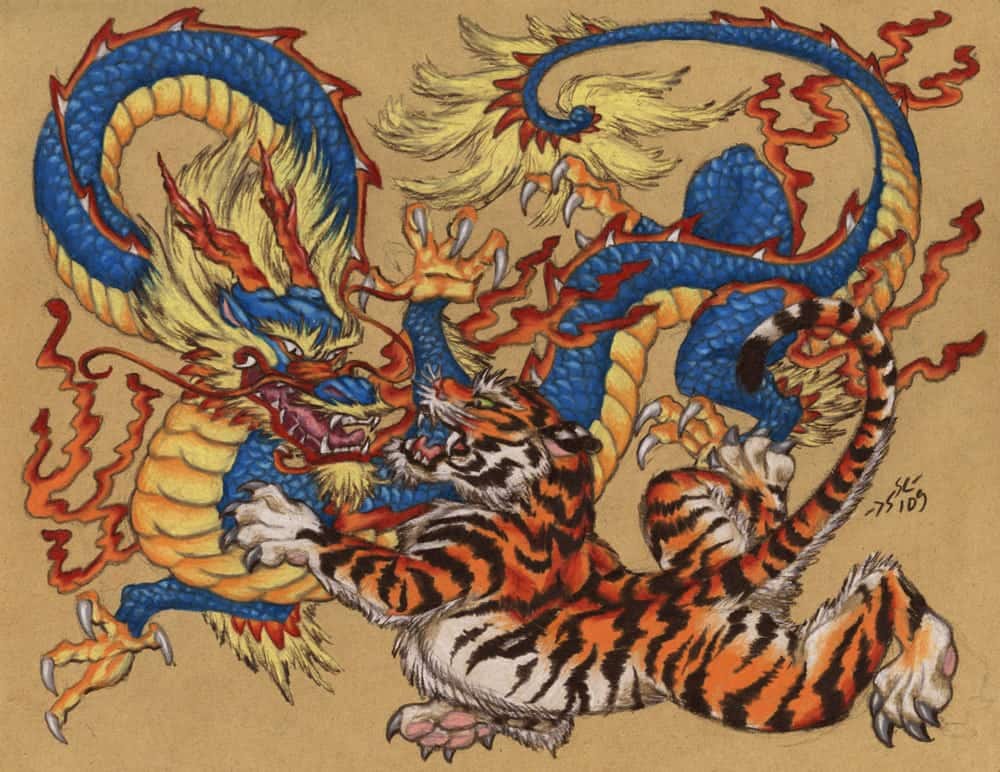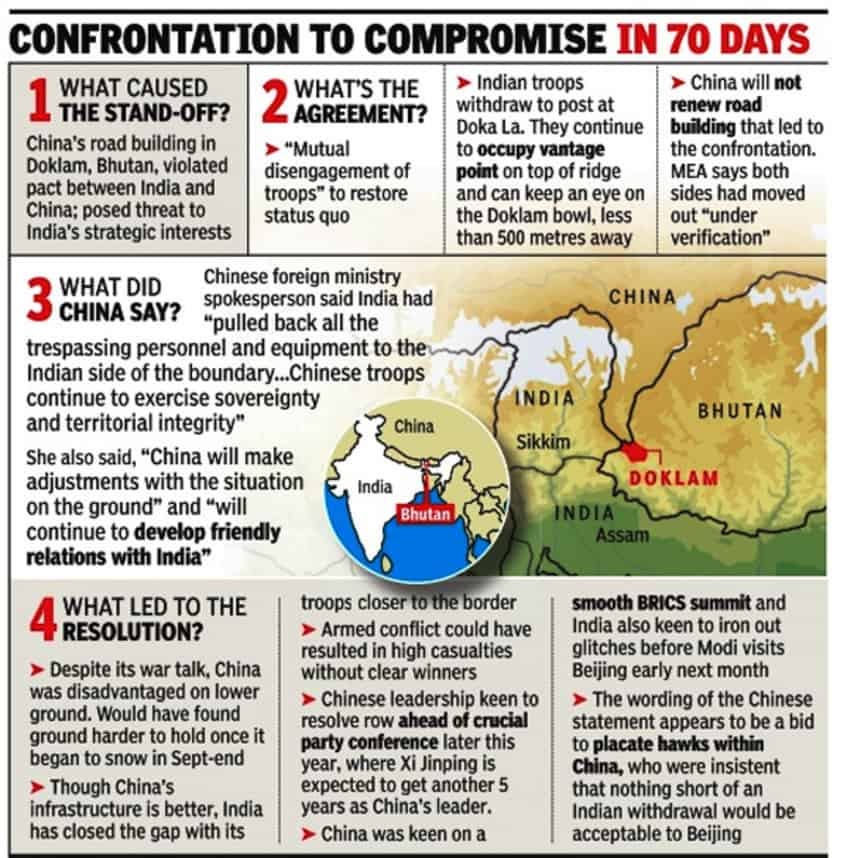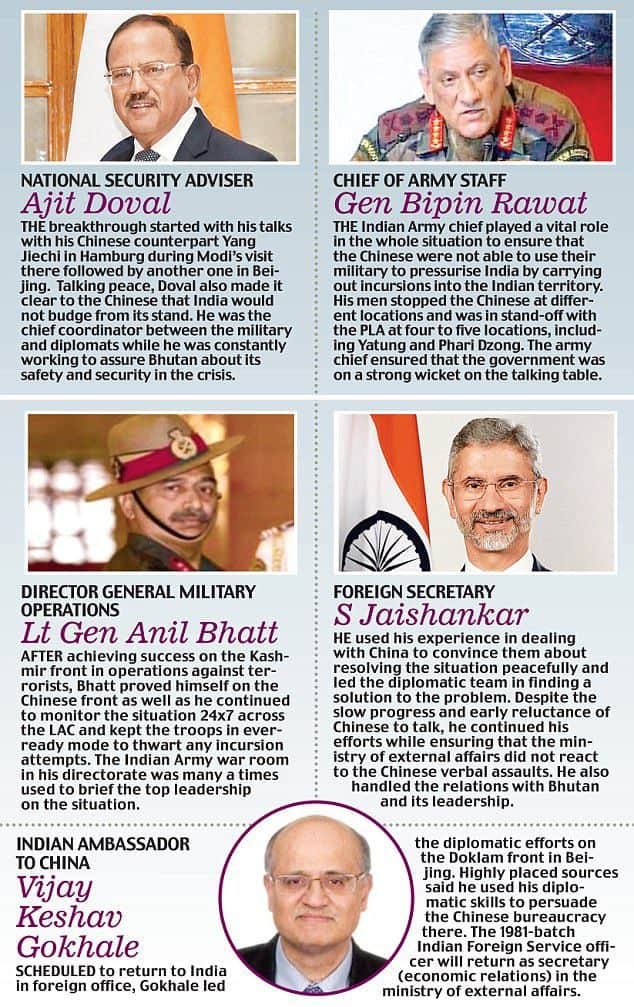China – the Global and Regional bully – Checkmated by Steady India in Doklam

China has a ‘Three Warfares Strategy’ created by its Central Military Commission in 2003 and updated in 2010– which incorporates the combination of media war, psychological war and legal war.
In 2003, the Central Military Commission (CMC) approved the guiding conceptual umbrella for information operations for the People’s Liberation Army (PLA) – the “Three Warfares” (san zhong zhanfa). The concept is based on three mutually reinforcing strategies: (1) the coordinated use of strategic psychological operations; (2) overt and covert media manipulation; and (3) legal warfare designed to manipulate strategies, defense policies, and perceptions of target audiences abroad.
Beyond the military might, China uses these three fronts to attack the adversary. To do that, it has cultivated and created its assets on the ground who help them further the media and psychological war. In India, certain media outlets and journalists were running the media war on how India should be out of Doklam. Also, the Communist Party, which is primarily a front for the Chinese interests in India, was also doing the same. Take a look at this conversation to see the underlying spin of the narrative:
In fact China even came up with a racist video, which was slammed everywhere including by Indians. Here are a few reactions:
Now, that the Doklam issue where India and China were in a stand-off for over two months has come to a close with India and China taking their forces out of Bhutan, while India is still overlooking the area to ensure that China does NOT build a road within the Bhutanese territory – one needs to see what really happened.
When India entered and pushed the Chinese forces and construction crew out of the Bhutanese territory, it had to look at three interests – Indian, Bhutanese and also of the regional players who are at the receiving end of the Chinese aggression when it comes to territorial expansion. So the response involved a three-pronged strategy:
maintain the forces on the ground and prepare for a military retaliation by China there and other fronts
maintain Bhutan’s interests and territorial integrity
brave the inevitable Chinese pressure
Chances of Chinese attacking and opening other fronts was real and India prepared for that. Meanwhile, countries like Vietnam, Mongolia, Singapore and Japan were watching closely. Japan openly came out and supported India’s stand. Which the Chinese hated. After all, Japan has been pointing to the constant effort by the Chinese to expand into others’ territories in South China Sea and the Himalayan areas.
But, Japan’s support to India over Doklam standoff is not a surprise. In fact, it was Japan in January 2014 which asked India to forge a team to thwart Chinese expansionist moves in the East China Sea as well as in the Himalayas.
Japan’s call for a united opposition to Chinese moves had come in the backdrop of Beijing’s unilateral move to change status quo in the East China Sea where it had imposed Air Defence Identification Zone (ADIZ).
Japan’s Defence Minister Itsunori Onodera had then said, “Both Japan and India should ask for a dialogue with Chinese side and tell China not to change status quo by force. These issues should be solved through dialogue and following international rules.”
Japan’s backing was natural in the case of Doklam stand-off.
China gets the “face-saving” gesture from India
Both the sides have now withdrawn the troops from the area. India
On Monday, the two sides announced they had reached an agreement, with India saying its troops were disengaging and China saying it would redeploy forces in response. By the evening, India said both sides had almost completed their withdrawals.
Bhutan has welcomed the actions of India and China to back off from the crisis that had come about.
“We hope this contributes to the maintenance of peace and tranquility and status quo along the borders of Bhutan, China and India in keeping with the existing agreements between the respective countries,” the Bhutanese foreign ministry said.
While disengaging and backing out of the area, despite its public stance of not talking or withdrawing, China needed some face-saving way to handle its image internally and externally, which India provided.
The government did not seek to match China’s public belligerence, terming India as the aggressor and demanding that it call its troops back to avoid a fiery retaliation.However, in the negotiations, sources said, India firmly held that bilateral ties would with a face-saving exit by not contesting its version of the terms of disengagement.
China’s initial response on Monday morning was to say that only Indian troops had withdrawn from the site, that they would continue to “maintain sovereignty“on the plateau. India did not contest this publicly until late in the afternoon when a second Indian statement clarified that both sides had withdrawn “under verification“
More importantly, post this stand-off and disengagement, there will be patrolling by China in the region, but no road construction.
China needs to stop bullying
China’s history – just as India’s – has been full of foreign powers devastating its integrity and people. The Japanese and the British were villains in the past and they have in many ways shaped the minds and narrative of the Chinese people with respect to the other countries. But, the way to get over that history is not to become like Britain or Japan of the past. Because no one likes an aggressor. And, today’s world is not the same as the world in 1700s.
The cheap shots at every country in a bid to rewrite history and redraw lines on the land cannot work anymore.
Lee Kuan Yew school of public policy’s dean and ex-diplomat Kishore Mahbubani’s suggestion that Singapore should hold its words on issues concerning China produced a strong denunciation. Singapore, it was said, had a strong interest in ensuring navigation in South China Seas is not restricted. Mongolia displayed the temerity of hosting the Dalai Lama.
India has shown through its handling of this stand-off that with proper engagement and standing firm on its principles and territorial integrity, one can take on Chinese belligerance and stop its designs.
Why aggression against India?
Honestly, I have never understood the rationale for the aggression against India from China. Whether it was the 1962 war or the infiltration into Indian politics via the Communists and trying to use Pakistan as a vassal state and pushing its agenda of terrorism. China has regularly vetoed sanctions against known terrorists in UN Security Council – Hafeez Saeed and Masood Azhar. Backing a “friendly country” (read vassal state) is one thing, to back terror is another. Unless of course China approves and actively backs terrorism from Pakistan as an active weapon against India. Which makes China complicit in the use of terror as a state policy instrument!
The new found Indian confidence is a direct consequence of the combination and partnership between PM Narendra Modi and NSA Ajit Doval. Both have given pragmatism and purpose to the Indian foreign policy. China doesn’t stop talking and attempting hegemony – at least in its own region.
And, India of Modi-Doval will not let that happen. Either India and China respect each other’s sovereignty and place in the world or there will be fireworks. And given how things stand with the military strength of both the giants, it is not in anyone’s interest to have a war or any battle. That is is what both of the leaders looked at while disengaging from each other.
“What’s certainly clear is that India has no appetite for being pushed around by its increasingly hegemonic neighbor. Given China’s ambitions forth of its borders – not least in terms of building connectivity and strategic alliances in areas of land and sea that India is accustomed to viewing as its own sphere of influence – future flashpoints seem inevitable. But whether the stand-off at Doklam comes to be viewed as a phoney prelude to some more heated conflict or a footnote in a coming trajectory of greater bilateral co-operation, the fact that no shots were fired in this little summer contretemps suggest both sides have at least weighed the risks attached.”
This will not only end up giving strength and confidence to the Indian bureaucracy but also to the spirits of neighbors and other countries like Philippines which have borne the brunt of Chinese aggression and mind-play. These will not work anymore now. If China has to engage, it needs to do so as a responsible citizen of the world.





